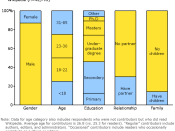Research DesignDesign for the collection of dataThis study will be done in the form of an action research. A quantitative approach will be utilized to investigate the effects of Collaborative Learning on academic performance and social skills among a group of Grade Six students. A quantitative approach provides reliable, hard statistics. This type of approach uses closed-ended questions. The participants for this study will be selected from a Grade Six class at a primary school in Clarendon. Students will be placed in groups of five heterogeneously. Participants will be tested at the beginning of the study using a Pre-test and at the end using post- test after implementing Collaborative Learning activities and individual activities. Questionnaires and observation schedule will also be prepared for use in the process. Letters will be sent to the Principal of the school requesting permission to conduct the study. The parents of the sample will also be sent a letter asking agreement for their children to participate in the research.
Quantitative ResearchThe researcher has selected the quantitative approach to carry out an investigation into the use of Collaborative Learning strategies to foster satisfactory academic performance.
McInnerney (2005), states that the strengths of the quantitative concept are that its methods produce quantifiable, reliable data that are usually generalizable to some larger population. Quantitative measures are often most appropriate for conducting needs assessments or for evaluations comparing outcomes with baseline data.
Paulsen (2003), states that quantitative research uses methods adopted from the physical sciences that are designed to ensure objectivity, generalizability and reliability. These techniques cover the ways research participants are selected randomly from the study population in an unbiased manner, the standardized questionnaire or intervention they receive and the statistical methods used to test predetermined hypotheses regarding the relationships between specific variables. The researcher is considered external...


